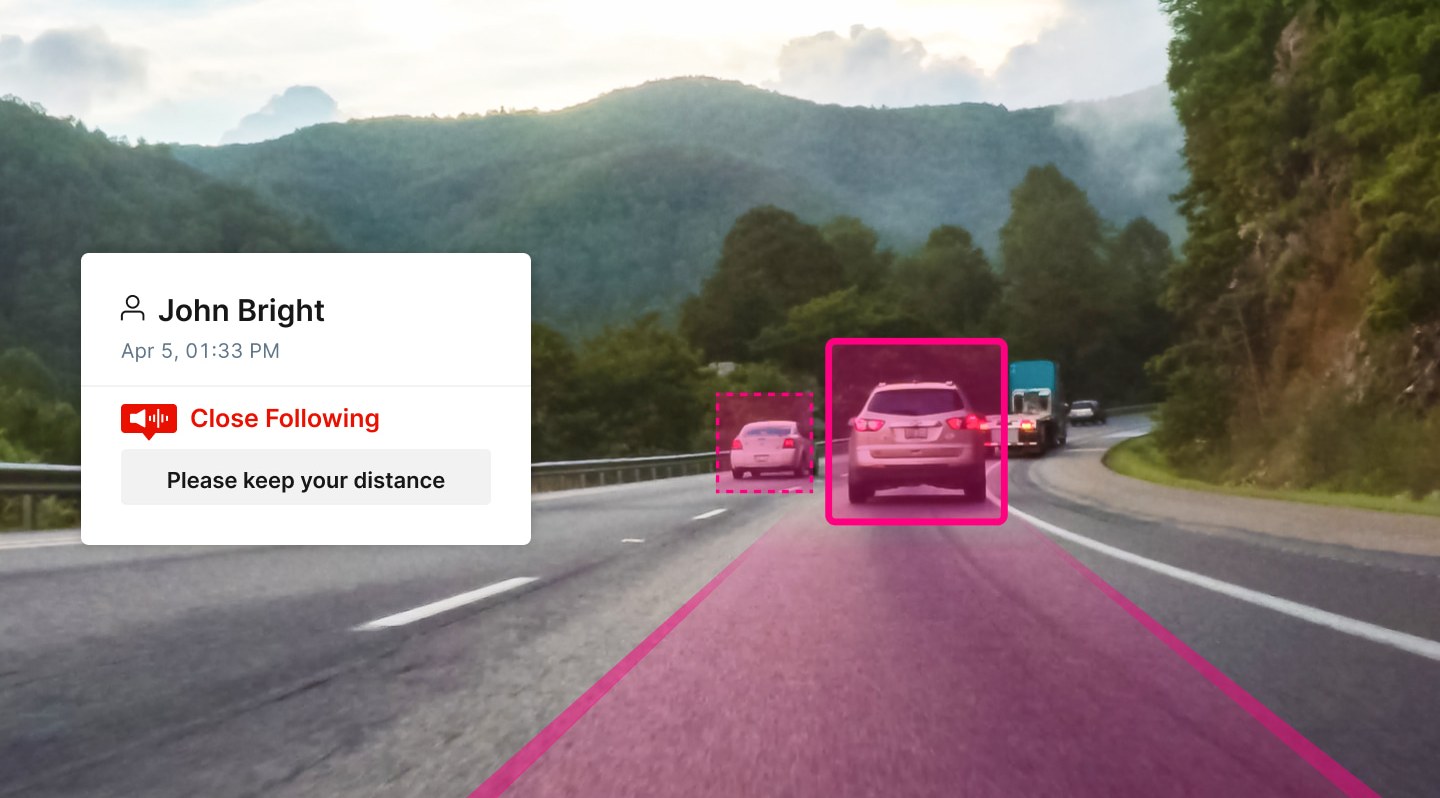Risky fleet driver behaviors occur all too often. But some of the riskiest habits can serve as warning signs of future incidents. If you pay attention to these warnings, you can take steps to improve driver behavior and your fleet’s safety.
The American Transportation Research Institute (ATRI) recently released an updated version of its Predicting Truck Crash Involvement research. ATRI analyzed more than 580,000 individual truck driver records and identified 25 different violations and convictions that can predict the likelihood of future crashes. In fact, fleet drivers who committed the five riskiest behaviors increased their likelihood of a future crash by more than 100%.
And since 2005, ATRI has found that these behaviors continue to grow even more predictive. For example, the 2022 report found that drivers with a previous crash were 113% more likely to have a future crash — a rise of 28.4% since 2018.
However, artificial intelligence (AI) can accurately identify these risky behaviors to help fleet managers know when coaching is required. AI-driven in-cab alerts can even prompt drivers to make immediate corrections.
AI becomes even more powerful when paired with a comprehensive coaching program. In fact, a recent Motive study found that fleets using Motive’s AI-powered dash cams and frequent coaching had 22% fewer accidents and 56% fewer safety incidents.
Today, fleets are blending advanced AI with coaching to improve driver behavior, reduce risks, and improve overall fleet safety.
ATRI’s five riskiest behaviors
Based on ATRI’s most recent data, the five riskiest behaviors in terms of future crash probability are:
- Failure to yield right-of-way violation
- Failure to use/improper signal conviction
- Prior crash
- Reckless driving violation
- Failure to obey traffic sign conviction
For example, a fleet driver with a failure to yield right-of-way violation has a 141% greater likelihood of a future crash.
However, ATRI also finds that over 93% of the 583,805 drivers analyzed were not involved in any crashes during the two-year reporting period. This indicates that if fleet managers can identify which drivers most need coaching, carefully targeted efforts can improve the safety of the entire fleet.
How AI can help reduce risky fleet driver behaviors
AI can help identify which drivers are at risk for exhibiting behaviors that put them in jeopardy.
Motive’s AI Dashcam, known for its accuracy, can detect unsafe behaviors and alert drivers to modify their behaviors in real time.
Use video to identify risky fleet driver behaviors
The Motive Fleet Dashboard automatically prioritizes each video event, helping managers cut through the noise and focus on the most serious incidents. With full safety context provided on each video, managers can easily identify behaviors that put their fleet at risk without manually reviewing hours of video footage.
Dash cam footage can be a great tool for coaching your fleet drivers. It’s one thing to tell someone they made a mistake; it’s another to show them how dangerous the situation could have become.
Exonerate fleet drivers
Dash cam footage can also exonerate drivers when they’re falsely accused of causing an accident. D&A McRae, Inc was able to use footage from the Motive AI Dashcam to prove that a collision occurred when their driver was cut off by another truck changing lanes. When law enforcement reviewed the footage, they saw what really happened.
“Footage from Motive’s Smart Dashcam exonerated our driver on the spot and saved us what could have been close to $50K in damages,” terminal manager Rod Conrad says. The footage also saved the company legal headaches and a hit to the driver’s CSA score.
Send in-cab alerts
The Motive AI Dashcam can also provide in-cab alerts that instantly notify drivers to keep their eyes on the road, increase their following distance, or take other actions. By correcting behaviors in the moment, drivers are more likely to learn from their mistakes.
Score driving behaviors
Finally, AI can aggregate trends by driver or fleet. Motive’s proprietary DRIVE risk score weighs behavior across Motive’s network of 550,000+ fleet drivers to provide an objective measure of each driver’s risk. Over time, you can use the DRIVE score to track the impact of your driver coaching. Share this data with your manager and fleet to celebrate team wins — or with your insurance broker when it’s time to negotiate rates.
For example, Tri-Pol Enterprises was facing a 45% increase in their insurance premium rates. When safety manager Stacy Hill reviewed Tri-Pol’s Motive data, he was able to demonstrate a decrease in harsh braking events and other dangerous driving behaviors. The insurance company relented and cut the rate increase to just 17%.
How AI can support a safety coaching program
A comprehensive safety coaching program can strengthen your safety culture. With executive buy-in, a coaching program provides a framework to help fleet drivers continuously improve their behaviors, identify and learn missing skills, and reduce overall risk.
The most effective safety coaching programs have three elements: in-person, remote, and automated. AI can help identify and prioritize the behaviors that need coaching. The video footage generated by AI dash cams makes it easier to show behaviors, while Motive’s automated coaching includes in-cab alerts and reminders to continuously reinforce lessons. This AI-driven automated coaching also gives drivers more autonomy and privacy, allowing them to review their own footage.
Let AI start helping you improve your fleet’s safety
Ready to see how AI can help you advance your own safety initiatives? Request a demo to see how Motive can help cut your drivers’ riskiest behaviors.




